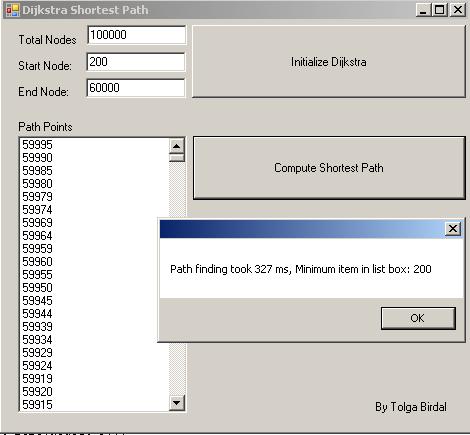Dijkstra Shortest Path C Program
- Posted in:Admin
- 23/02/18
- 72
Here you will learn about dijkstra's algorithm in C and also get program. Dijkstra algorithm is also called single source shortest path. Dijkstra's algorithm in C. What is the most simple & efficient C++ code for Dijkstra's shortest path algorithm? // A C / C++ program for Dijkstra's single source shortest path algorithm. C Program to implement Dijkstra’s algorithm. Dijkstra’s Algorithm finds the shortest path with the lower cost in a Graph. Dijkstra’s Algorithm solves the Single.


Dijkstra’s Shortest Path Algorithm is a popular algorithm for finding the shortest path between different nodes in a graph. It was proposed in 1956 by a computer scientist named. Often used in routing, this algorithm is implemented as a subroutine in other graph algorithm. In this post, I have included a pseudo code and source code for Dijkstra’s Algorithm in C along with a brief introduction to this algorithm. Dijkstra’s algorithm finds the solution for the single source shortest path problems only when all the edge-weights are non-negative on a weighted, directed graph. In other words, the graph is weighted and directed with the first two integers being the number of vertices and edges that must be followed by pairs of vertices having an edge between them.
In the source code for Dijkstra’s algorithm in C, the inputs are asked as source, target and the weight of the path between two nodes. Before going through the source code for Dijkstra’s algorithm in C, here’s a look at the algorithm itself and a pseudo code based on the algorithm. You can read more about Dijkstra’s algorithm by going to these links:., and here are a couple of Youtube links you can watch if you don’t know much about this algorithm:.. Dijkstra’s Algorithm to Find the Shortest Path: Let’s fix a node as the initial node; this will be the node at which we are starting. Let the distance of node “Y” be the distance from the initial node to “Y”. Now, in Dijkstra’s algorithm, some initial distance values are assigned, and these values are improved step by step.
The algorithm procedure is given below: • A tentative distance value is assigned to every node; this value is set to zero for the initial node, and to infinity for all other nodes. Acteck Drivers Agj-3300. • All nodes unvisited are marked, and the initial node is set as current. An unvisited set ( a set of all the unvisited nodes) consisting of all the nodes is created. • For the current/initial node, take into account all the unvisited nearby nodes, and calculate their tentative distances. Make a comparison of the current assigned value and the newly calculated tentative distance; assign the smaller value. For example: if the current/initial node X was marked with a distance of 4, and the edge connecting it with a nearby neighbor node Y has length 1, then the distance through X to Y will be 4 + 1 = 5.
If Y was previously assigned a value greater than 5, then change it to 5. Deadpool Keygen For Mac. Otherwise, keep the value as it is.
• A visited node is never to be checked again. Winning Eleven 4 Iso Portugues more. So, after finishing above steps with all the neighbors of the current node, make that node as visited and remove is from the unvisited set. • Stop the algorithm if, when planning a route between two specific nodes, the destination node has been marked visited.
• Also, stop the algorithm if, when planning a complete traversal, the smallest tentative distance among the nodes in the unvisited set is infinity. This case is a result of no connection between the initial node and the remaining unvisited nodes. • Find the unvisited node assigned with the smallest tentative distance value, and this will be the new “current mode”. Go back to step 3, and continue. Below is an example which further illustrates the Dijkstra’s algorithm aforementioned. Consider a weighted graph as shown. Function Dijkstra(Graph, source): dist[source]:= 0 // Distance from source to source for each vertex v in Graph: // Initializations if v ≠ source dist[v]:= infinity // Unknown distance function from source to v previous[v]:= undefined // Previous node in optimal path from source end if add v to Q // All nodes initially in Q end for while Q is not empty: // The main loop u:= vertex in Q with min dist[u] // Source node in first case remove u from Q for each neighbor v of u: // where v has not yet been removed from Q.